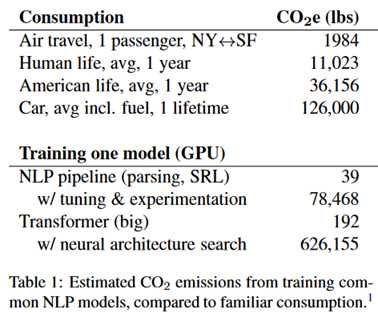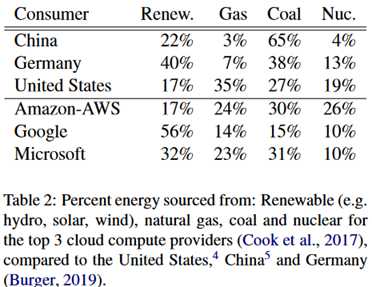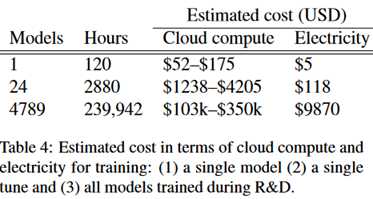写一篇题为Conserving Energy in Daily Life的英语搞
Posted
tags:
篇首语:本文由小常识网(cha138.com)小编为大家整理,主要介绍了写一篇题为Conserving Energy in Daily Life的英语搞相关的知识,希望对你有一定的参考价值。
快
参考技术A Changing Your Life by Conserving EnergyPolio survivors need to learn to conserve energy if they are to control their symptoms of pain, weakness and fatigue.[1] It takes effort and a change in attitude to learn to use energy conservation to our greatest advantage. Using our energy well can allow us to do more and do it better.[2] This article suggests four principles of energy conservation and three techniques for making the necessary changes in our lives. Many of us don’t have the strength and energy that we used to have so it’s time we started taking better care of ourselves. Why Should We Learn to Conserve Energy?In a study by Peach and Olejnik,[1] recommendations for change included “decreasing overall daily activities, a change in job, work environment modifications, a decrease in work hours, a decrease in social and recreational activities or taking rest breaks. New or additional orthotics were also recommended to effect safer, less painful and more functional gait patterns. In some patients, a component of disuse weakness was noted. In these cases, appropriate aerobic exercises were recommended, carefully avoiding over-exercising paretic extremities. A number of these patients had become overweight so a weight loss program was recommended.”[1] Those who made recommended changes showed either improvement or resolution of symptoms of weakness, fatigue and muscle and joint pain. Those who didn’t make changes found symptoms were either unchanged or increased.Those with post-polio syndrome who were able to make changes and successfully control the factors responsible for overuse did not lose muscle strength. Polio survivors who didn’t make changes knew what they needed to do. Many simply refused to make changes in the behaviors that lead to overuse. Doing More With LessAgre and Rodriquez[2] noted that the amount of isometric “work” performed during interval exercise was significantly greater (237% on average) than during constant exercise. (Interval exercise was simply the constant exercise divided into quartiles by 2 minute rest breaks or into 20 second intervals with 2 minute rest breaks.) They also found that those with symptomatic post-polio were able to monitor local muscle fatigue and avoid exhaustion. Symptomatic post-polio subjects also recovered strength significantly less readily than a control group. If we allow ourselves to become overtired it takes us longer to get our strength back. By changing our activities to include rest breaks we may find we can do more with less effort.Changing Your AttitudeChange is not always easy. In fact many polio survivors find change very frightening. Change requires examining the attitudes and beliefs that keep us from feeling well. We can change the quality of our lives by changing the way we look at our circumstances. Creative people are most successful at doing this over the long term. They see opportunity, where others see insurmountable problems. There is no reason we cannot see ourselves as creative and start making our lives better. Creative people are simply those who see themselves as creative.[3]The way we see ourselves may interfere with our ability to change. One approach to the whole issue of activity is to be kind, positive and gentle with ourselves. The person behind the pain and fatigue, the real you, is a capable, worthy, individual and a beautiful human being. It’s time to start treating ourselves like the wonderful beings we are. It’s time to start taking care of ourselves as if we were precious possessions.Only you can decide to be sore and tired or relaxed and comfortable. You must decide if you want your weakness and fatigue to progress. You are responsible for what you do. You have no control over anyone other than yourself, and only when you are clear about who is responsible for your activity will you have the power to master it. You have the capacity to recognize fatigue and overuse.[2] You must decide how much you will or will not do.Your mate, your friends, your boss, your doctor, your physiotherapist and your occupational therapist can only advise you. When you go on Dr. X’s Program, you may lose the power to choose when, what and how much you’re going to do. It may carry with it the terrifying feeling that you are back in the polio ward again and someone else is in charge of what you do. It also gives you someone else to blame for your weakness and fatigue: Dr. X’s Program didn’t work. You have given your power away to Dr. X. Dr. X may have some useful suggestions, but only you can decide what works for you. Four Principles of Conserving EnergyThe main principles of conserving energy include (1) doing what you most want to do, (2) planning activities for times when you have most energy, (3) learning what your maximum work is and respecting the signs of fatigue you experience and (4) stopping before you become exhausted.Before you begin any activity you should think about whether you really want to do it at all. Don’t ask yourself what you should do; ask yourself what you want to do. It is important to be flexible. Let others in the house or office help you with the jobs you find tough. Delegate tasks whenever possible.Plan your activities for when you have the most energy. Most people don’t think about doing things if they are tired. Don’t waste energy by trying to do more than your body can comfortably do. If you are tired by noon, plan activities for the morning. We take a long time to recover if we allow ourselves to become exhausted.Learn what you can do without pushing yourself and respect the signs of fatigue (including muscle soreness, tiredness, muscle weakness, change in quality of movement, grimacing, etc.). Work simplification is an important tool to use in reaching our daily and long term goals in life. Work at a comfortable easy pace and avoid tension. A moderate work pace uses the least amount of energy and you will make fewer mistakes. Alternate heavy with light work each day and throughout the week. Break up heavy jobs over several days. Sit for as many jobs as possible. Allow time for interruptions and emergencies. If you find walking difficult, take along a wheelchair or get a scooter and save your energy for more important things. Pay attention to your body’s signals. Care enough about yourself to listen to the messages of pain and fatigue.Plan rest periods during the day and STOP before becoming exhausted. When taking a rest, relax completely with your feet up. Try resting 10-15 minutes between each hour or two of activity. It will probably take some trial and error to determine what is best for you. If you get tired in the middle of the day, have a one hour sleep early in the afternoon.Don’t expect the impossible, because even with a good plan, there will be setbacks. There are things we can’t change and accepting these will help make our lives work better. Sometimes we have to be willing to do a job less thoroughly than usual so we will have the energy to spend on our family or friends. Other times we may choose not to do the job at all!Three Techniques To Help Us Make ChangesKohl[4] suggests three techniques that we could use to help ourselves make changes. These are push to avoid pain, blank pad and plain talk.The push to avoid pain system acknowledges the amount of energy that we must generate in order to reduce our activity level. It is a statement of action, not of failure or backing down. It means that we are dedicated to taking care of ourselves. Other people, obligations and commitments will be prioritized according to pain thresholds and those actions that reduce pain. To delegate is action; to use respiratory equipment is an action with enormous consequences; to retain authority in a seated position requires great assertiveness. Taking care of ourselves is not giving in but rather a restatement of control. The pain will not control us, we will control the pain.The blank pad method of documenting accomplishments during the day reinforces a sense of purpose. Instead of making list after list of things to be done and then crossing off what has been completed, use a blank pad to record all you have done. It is a great training exercise for developing awareness of all the energy expenditure that does occur. It also saves us from devaluing ourselves for that which was not done. The goal is to avoid negative feedback at the end of the day and replace it with positive feedback.Plain talk was developed in response to people asking how to keep themselves and others from feeling manipulated. If someone does not respect a simple “No” in response to a request, we may have to ask “Why do you want me to be in pain, more tired, overextended, not able to enjoy our time together, etc.?” We need to practice simply worded responses that will increase the other person’s awareness of the impact of their requests without creating defensiveness.Taking Care Of YourselfYou have changed physically. Your old coping strategies don’t work anymore. You must decide if you want your weakness and fatigue to progress. You are responsible for what you do. When you are clear about who is responsible for your activity you have the power to master it. You can live better if you adapt to the changes in your body. Energy conservation can help you feel better and do more with less. Only you can make the decision to take control and take care of yourself.
论文阅读 | Energy and Policy Considerations for Deep Learning in NLP
论文地址 :https://arxiv.org/abs/1906.02243v1
作者 : Emma Strubell, Ananya Ganesh, Andrew McCallum
机构 : University of Massachusetts Amherst
研究的问题:
一篇很绿色的文章。作者认为现在的NLP模型,虽然精度提高了,但它们消耗了大量的计算资源,这些资源带来了大量的能源消耗。像模型的开发,本身需要很大成本,计算资源会消耗很多碳资源,产生很多二氧化碳。这很不环保。所以作者量化了最近的一些神经网络的经济成本和环境成本,希望来警醒NLP研究者。
研究方法:
NLP的进步得益于神经网络技术和硬件的进步。在十年前,大部分NLP模型可以在个人电脑进行,现在的都要在好多个GPU跟TPU上进行,这就消耗了很多财力。
即使有足够的钱呢,训练一个模型也会给环境带来很大压力。下面这张图是NLP模型训练排放的二氧化碳跟一些其他东西相比。

呐,可能会有人反驳说,现在已经有很多可再生资源了。但实际上大多数还是使用的非可再生资源,如下所示。

研究方法:在训练模型的过程中,反复地查询NVIDIA系统管理接口来获得GPU功耗,使用Intel的接口来获得CPU功耗。设p_c是CPU的平均功耗,p_r是DRAM的平均功耗,p_g是GPU的平均功耗。总功耗的公式为:

这里的1.58是power usage effectiveness系数。
然后根据美国环境保护署提供的美国电力消耗的平均二氧化碳排放量,将功耗转化为二氧化碳排放量:

模型训练成本:
使用的模型包括Transformer、ELMO、BERT、GPT-2四个非常流行的模型。
实验结果如下:

这里的云计算成本是估计的结果。可以看到,成本真的很贵。
这里举了一个例子,So等(2019)在英德翻译上取得了29.7的BLEU,仅仅提高了0.1BLEU,成本至少15万美元。
模型研发成本:
这里以EMNLP2018的Best long paper为例讨论。(我看了一下,就是本文的一作的论文)
这个模型相关的训练持续了172天,此期间执行了123小时的超参数搜索,所花的GPU时间是9998天,约27年。下表是他们花的成本。

最后作者提出以下倡议:
1、研究人员报告他们的训练时间、超参数敏感性。
2、研究人员应当公平地使用计算资源。
3、研究人员应当考虑计算效率更高的硬件和算法。
评价:
作者提出的一些倡议还是有一定的见解的。也提出了当前越来越依赖计算资源下,会使研究陷入“富人越富”的情况,作者认为应当由政府来给所有研究人员提供公平的资源学术。总的来说,作者提出了他心目中NLP研究的“桃花源”。
以上是关于写一篇题为Conserving Energy in Daily Life的英语搞的主要内容,如果未能解决你的问题,请参考以下文章
论文阅读 | Energy and Policy Considerations for Deep Learning in NLP
Essentially No Barriers in Neural Network Energy Landscape
work-conserving scheduling 是什么
A Secure Charging Scheme for Electric VehiclesWith Smart Communities in Energy Blockchain
An Experimental Comparison of Min-Cut/Max-Flow Algorithms for Energy Minimization in Vision